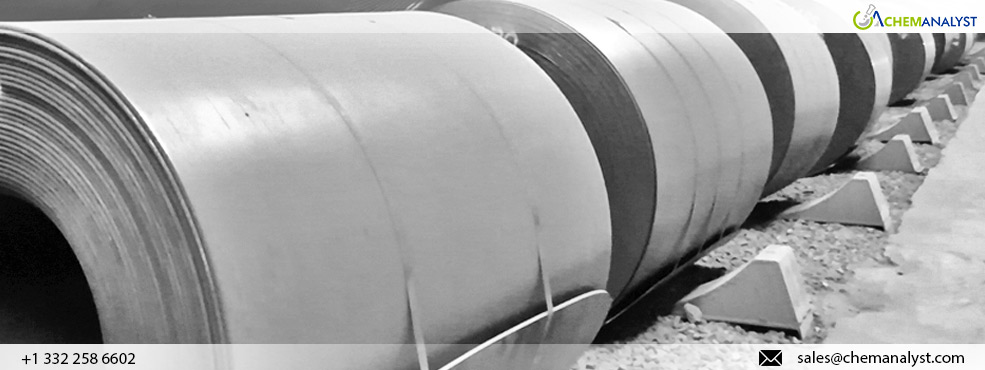Welcome To ChemAnalyst

In a recent development, American steelmaker Nucor has taken a pivotal step by announcing a reduction in weekly prices of Hot-Rolled Coil (HRC). This move comes in response to a noticeable slowdown in steel demand that has been observed in the market. Market participants have indicated that local rolling mills in the US initiated price reductions for HRC towards the end of last week in a bid to incentivize sales and stimulate market activity.
US HRC prices experienced a further decline in the past week, aligning them closely with offshore HRC hot band prices on a landed basis. This price trend reflects the current challenges facing the domestic HRC steel industry as it navigates through evolving market dynamics and global trade influences.
According to the latest data from the American Iron and Steel Institute (AISI) for the week ending on June 15th, the US produced approximately 1.7 million net tons of crude steel. This production figure represents a 0.7% decrease compared to the previous week. The capacity utilization rate during this period stood at 76.7%, marking a slight week-on-week decrease of 0.6%.
The influx of steel imports from Vietnam has notably strained domestic steel prices in the US. This trend has sparked discussions on potential anti-dumping investigations or new protectionist measures targeting Vietnam, as authorities seek to address the repercussions of shifting trade dynamics. While recent tariffs primarily targeted Chinese steel exports, the persistent challenge of oversupply persists, highlighting the need for comprehensive strategies to safeguard the domestic market.
Nevertheless, the US steel market continues to face persistent weak demand for HRC sheet, which has exerted downward pressure on HRC prices. The latest market reports indicate that US HRC prices witnessed significant declines driven by high-volume, low-priced transactions as mills sought to bolster order volumes amid subdued demand conditions.
Steel tariffs imposed in recent times aimed at curbing Chinese exports, yet the market continues to grapple with an abundance of low-priced Chinese steel products. Despite subdued consumer demand and economic challenges within China, the country's steel output remains robust. Industry subsidies in China help keep steel prices at competitive lows, creating a challenging environment for steel manufacturers globally.
US HRC prices faced significant downward pressure due to lacklustre demand, prompting mills to engage in high-volume, low-priced transactions to secure orders. European prices also experienced declines, reflecting weak demand dynamics despite attempts by domestic mills to adjust prices following alterations to import safeguard measures. Chinese domestic prices were impacted by adverse weather conditions, with a focus on foreign markets leading to price corrections across Asia.
Furthermore, market participants noted a slowdown in end-use demand, particularly in sectors beyond automotive, influencing buying behaviour and inventory management strategies. Service centre inventory levels have steadily increased in 2024, while shipping rates have declined, indicating a cautious approach to market dynamics. Unless there is a notable shift in demand or production adjustments, prices are unlikely to see significant traction in the near term.
Looking ahead, price support in the US HRC market may hinge on factors such as inventory levels at HRC service centres and potential disruptions like the ongoing strike at an ArcelorMittal facility in Mexico. Until a compelling need for HRC restocking emerges or adjustments in HRC sheet output occur at the mill level, the market is likely to grapple with limited price support. In conclusion, the US HRC market reflects a dynamic landscape characterized by evolving demand patterns, global HRC trade influences, and supply chain considerations.
We use cookies to deliver the best possible experience on our website. To learn more, visit our Privacy Policy. By continuing to use this site or by closing this box, you consent to our use of cookies. More info.
